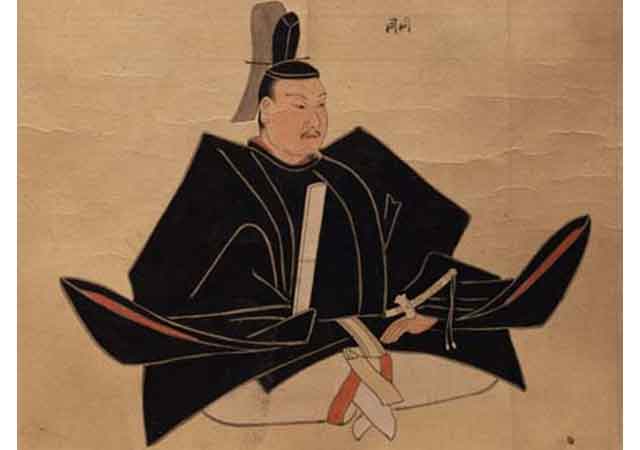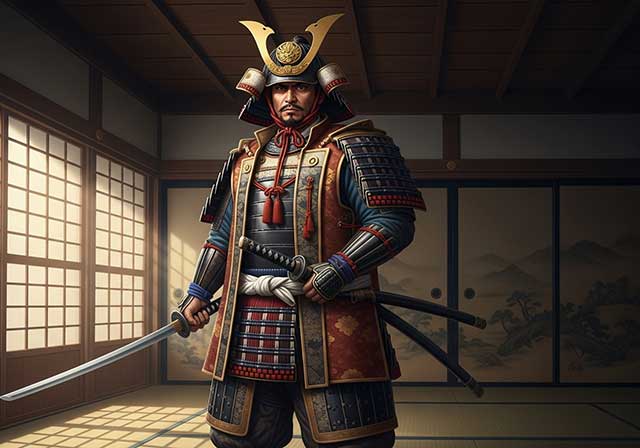
Ashikaga Yoshiharu (April 2, 1511 – May 20, 1550) held the position of the twelfth shogun in the Ashikaga shogunate from 1521 to 1546, during the late Muromachi period of Japan. He was born as the son of the eleventh shōgun, Ashikaga Yoshizumi, and was known by the childhood name Kameomaru.
Yoshiharu was a man known for his wisdom, respect, and considerable stature. He governed Japan for over two decades, from 1521 to 1546, displaying a notable grasp of power. However, like his predecessors, his rule was not without controversy.
As the twelfth shogun of the Ashikaga Shogunate, he was the offspring of the eleventh shogun, Ashikaga Yoshizumi, and his biological mother was a lady named Hino Akiko.
The Rule of Ashikaga Yoshiharu
Critics often argue that Ashikaga Yoshiharu's tenure as shogun was marked by ineffective leadership. Drawing from historical records, references, and books, scholars have observed how advisers wielded significant influence over him. In some instances, they even made decisions on his behalf.
There were multiple occasions when these advisers managed to remove the Shogun from the capital for various reasons, effectively placing him in exile while they ruled in his name. This typically occurred when the shogun attempted to assert his ultimate authority.
One of the most notable incidents took place in 1528, when Shogun Yoshiharu was forced into exile due to an intense power struggle with Miyoshi Nagamoto, a retainer of Hosokawa Takakuni. At the time, the shogun sought to gather more supporters to potentially remove these daimyos from the council and consequently from the city. However, Miyoshi and Hosokawa, being cunning strategists, were already steps ahead of him.
Later on, with the assistance of Hosokawa Harumoto and Miyoshi Nagayoshi, the Shogun brokered a peace with Takakuni and Nagamoto, allowing him to return to the city. During his reinstatement, they once again attempted to wrest power from Nagamoto, but their efforts ultimately failed. This led to Yoshiharu's exile once more.
This time, the Shogun made the decision to retire from his position, believing that his lack of authority merely attached a title to his name without granting him the true ability to govern. Faced with repeated exiles, he chose to live as an ordinary citizen and pave the way for his successors to ascend to the throne.
The Passing of Ashikaga Yoshiharu
In 1561, Ashikaga Yoshiharu officially resigned from his post as the leader of the Muromachi period's shogunate. He was in exile in the Omi province at this time, accompanied by his family. Recognizing his impotence as a ruler and the futility of ongoing power struggles, he grew weary of being pushed out of the capital and constantly contending with formidable daimyos for the authority he rightfully deserved.
He passed away on May 20, 1550. Later, in 1568, supported by Oda Nobunaga, his son Ashikaga Yoshiaki ascended to become the fifteenth shogun.
From a Western perspective, Yoshiharu holds significance as he was the shogun at the time of Japan's first contact with the European West in 1543. A Portuguese ship, blown off course to China, made landfall in Japan.
See also
-
Sakakibara Yasumasa

Yasumasa was the second son of Sakakibara Nagamasa and was born in Ueno in Mikawa Province. From a young age, he began serving Tokugawa Ieyasu and eventually rose to the position of one of his most trusted generals. His wife was the daughter of Osuga Yasutaka. Ieyasu first noticed the young Yasumasa during the suppression of the Ikkō-ikki uprising in Mikawa in 1564. Thanks to his demonstrated abilities, Yasumasa was granted the privilege of using the character “yasu”—the second character of Ieyasu’s own name—in his own. Although he was the second child in his family, he became his father’s heir, though the exact reasons for this remain unknown.
-
Sakai Tadatsugu

Tadatsugu was one of the most renowned generals serving Tokugawa Ieyasu. After Ieyasu broke ties with the Imagawa clan, Tadatsugu—an ardent supporter of this decision—was granted command of Yoshida Castle in 1565, which controlled the coastal road from Tōtomi to Mikawa. During the Battle of Mikatagahara in 1573, he held the right flank of the Tokugawa forces even when the troops sent by Oda fled under the assault of the Takeda army. In the Battle of Nagashino in 1575, he personally requested permission to carry out a night attack on the Takeda camp, which he executed brilliantly together with Kanamori Nagachika.
-
Ryuzoji Takanobu

Takanobu was the eldest son of Ryūzōji Takaie and the great-grandson of Ryūzōji Iekane. His father was killed by a man named Baba Yoritiku in 1544. At a young age, Takanobu took Buddhist vows and received the monastic name Engetsu. However, around the age of eighteen, he returned to secular life, and in 1548, after the death of Ryūzōji Tanehide, he became the head of both branches of the Ryūzōji family.
-
Ouchi Yoshihiro

Ōuchi Yoshihiro was the second son of Ōuchi Hiroyo, who headed the Ōuchi clan in the western part of Honshu. In 1363, Shogun Ashikaga Yoshimitsu confirmed the Ōuchi family in the position of shugo of Suō and Nagato Provinces. In his youth, Yoshihiro assisted his father in strengthening the influence of the Northern Court on the island of Kyushu — they served under Imagawa Ryōsun, who had been tasked with subjugating the nine provinces of Kyushu.
-
Ouchi Yoshioki

Ouchi Yoshioki, the ruler of the provinces of Suo, Nagato, and Iwami, was one of the most capable military commanders and politicians of the late 15th and early 16th centuries. The son of Ouchi Masahiro, he governed from his residence in Yamaguchi in the province of Suo. In 1499, Yoshioki gave refuge to Shogun Ashikaga Yoshitane, who had been driven out of Kyoto by Hosokawa Masamoto. Shogun Yoshizumi, Masamoto’s protégé, ordered the lords of Kyushu to unite their forces against Yoshioki; however, they did not dare to do so, fearing the power of a man who by that time controlled six provinces. Having gathered a substantial army, Yoshioki marched from his native Suo toward Kyoto in order to restore Shogun Yoshitane to power.
-
Otomo Sorin

Ōtomo Yoshishige came from a noble lineage, being the eldest son of Ōtomo Yoshiaki, the ruler of Funai Province. The roots of the Ōtomo family traced back to Fujiwara Hidesato, the adopted son of Nakahara Chikayoshi. Fujiwara served Minamoto Yoritomo during the Genpei War and took part in battles in Mutsu Province in 1189. In 1193, he was appointed shugo of Buzen and Bungo Provinces, after which he adopted a new surname—Ōtomo.
-
Okudaira Sadamasa

Sadamasa was the son of Okudaira Sadayoshi and took part in several battles under Tokugawa Ieyasu, distinguishing himself in the Battle of Anegawa in 1570, where he took two heads. Around 1572 he was forced to enter the service of the Takeda clan, but after the death of Takeda Shingen in 1573 he returned to Tokugawa, leaving Tsukude Castle together with his men. As a result of this defection, Takeda Katsuyori ordered the execution of Sadamasa’s wife and brother, who were being held as hostages.
-
Okubo Tadatika

Tadatika, the son of Okubo Tadayō, entered the service of Tokugawa Ieyasu at the age of eleven, and took his first head in battle when he was sixteen. After the establishment of the Tokugawa shogunate, he was appointed as a rōjū — a senior bakufu official — and was regarded as one of Ieyasu’s most trusted advisors, alongside Honda Masanobu. He is also known for his military chronicle Mikawa Monogatari, which describes Ieyasu’s rise to power and the early years of the Tokugawa shogunate.

